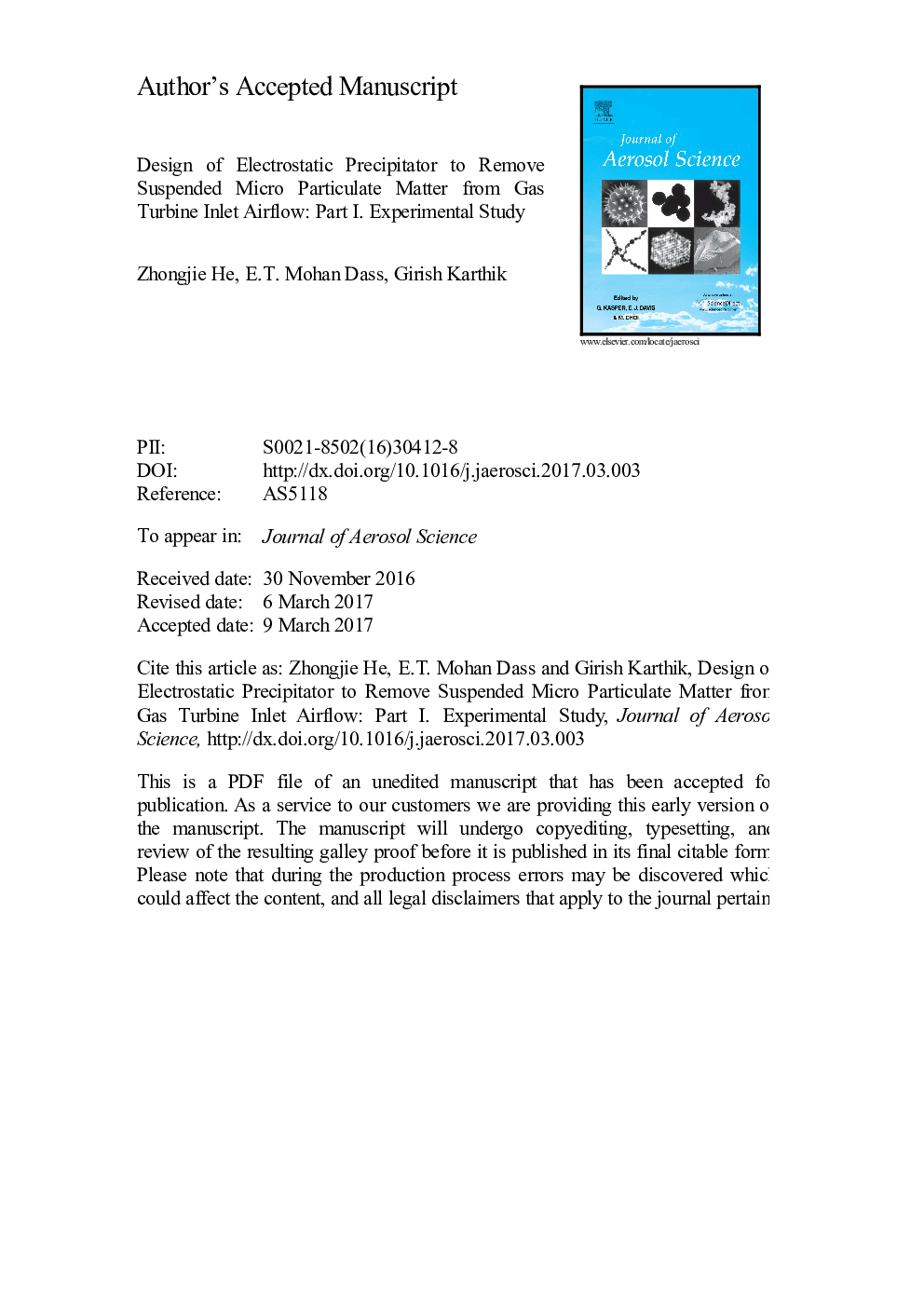| Article ID | Journal | Published Year | Pages | File Type |
|---|---|---|---|---|
| 5753990 | Journal of Aerosol Science | 2017 | 23 Pages |
Abstract
The inlet airflow to gas turbines in power plants is generally cleaned by industrial grade filters to prevent suspended micro particulate matter (PM) from entering the combustion chamber. However, as the filters get choked, pressure drop across them increases, and consequently the turbines cannot reach rated power generation. Beyond certain pressure-drop levels, filter replacement is required and the turbine has to be shut down, affecting the power generation revenue and also increasing maintenance cost. Instead of using filters, the present research work designs an electrostatic precipitator to remove air-born particles (especially 2.5 μm and larger in diameter) from gas turbine inlet airflow. As the first part of a two-paper series, the experimental study based on lab-scale prototype testing is elaborated here. As a result, the particle collection efficiency was 90-100% for PMâ¥10, 50-100% for PMâ¥4, 40-90% for PMâ¥2.5, and 30-90% for all particles in 1 m sâ1 flow, depending on the corona discharge wires' arrangement and applied voltage. By modifying the combination of wire arrangement and voltage, the energy consumption was reduced, especially for flow at a higher velocity. For both the 1.0 and 3.37 m sâ1 flows investigated, the bleed-off volumetric flow rate was less than 2% of the intake air, so that sufficient bulk airflow can be maintained and supplied to the gas turbine.
Keywords
Related Topics
Physical Sciences and Engineering
Earth and Planetary Sciences
Atmospheric Science
Authors
Zhongjie He, E.T. Mohan Dass, Girish Karthik,
